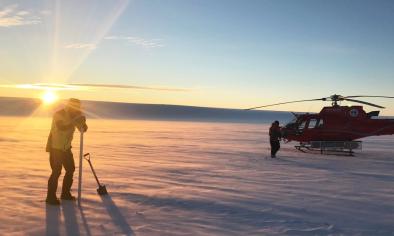Science Source
Mass balance of the Antarctic Ice Sheet from 1992 to 2017
Under natural conditions we don’t expect the ice sheet to lose ice at all. There are no other plausible signals to be driving this other than climate change.
Andrew Shepherd, lead author, University of Leeds in England
I think we should be worried. That doesn’t mean we should be desperate. Things are happening. They are happening faster than we expected.
Isabella Velicogna, one of 88 co-authors, University of California Irvine
- States that the Antarctic Ice Sheet is an important indicator of climate change and driver of sea-level rise
- Combines satellite observations of its changing volume, flow and gravitational attraction with modeling of its surface mass balance to show that it lost 2,720±1,390 billion tonnes of ice between 1992 and 2017 (this corresponds to an increase in mean sea level of 7.6±3.9 millimeters)
- Finds that over this period, ocean-driven melting has caused rates of ice loss from West Antarctica to increase from 53±29 billion to 159±26 billion tonnes per year
- Finds that ice-shelf collapse has increased the rate of ice loss from the Antarctic Peninsula from 7±13 billion to 33±16 billion tonnes per year
- Finds large variations in and among model estimates of surface mass balance and glacial isostatic adjustments for East Antarctica, with its average rate of mass gain over the period 1992-2017 (5±46 billion tonnes per year) being the least certain
Related Content
Headline

Jan 29, 2020 | BBC News
Journey to the 'doomsday glacier'
Headline

Nov 22, 2019 | NOAA Climate.gov
Understanding climate: Antarctic sea ice extent
Headline

Mar 26, 2019 | The Guardian
Australian researchers find huge lakes beneath largest east Antarctic glacier
Science Source
| Geophysical Research Letters
Mass Loss of Totten and Moscow University Glaciers, East Antarctica, Using Regionally Optimized GRACE Mascons
Yara Mohajerani, Isabella Velicogna, Eric Rignot


